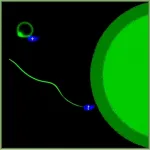(Press-News.org) For more than a century, optical coatings have been used to better reflect certain wavelengths of light from lenses and other devices or, conversely, to better transmit certain wavelengths through them. For example, the coatings on tinted eyeglasses reflect, or "block out," harmful blue light and ultraviolet rays.
But until now, no optical coating had ever been developed that could simultaneously reflect and transmit the same wavelength, or color.
In a paper in Nature Nanotechnology, researchers at the University of Rochester and Case Western Reserve University describe a new class of optical coatings, so-called Fano Resonance Optical Coatings (FROCs), that can be used on filters to reflect and transmit colors of remarkable purity.
In addition, the coating can be made to fully reflect only a very narrow wavelength range.
"The narrowness of the reflected light is important because we want to have a very precise control of the wavelength," says corresponding author Chunlei Guo, professor at Rochester's Institute of Optics. "Before our technology, the only coating that could do this was a multilayered dielectric mirror, that is much thicker, suffers from a strong angular dependence, and is far more expensive to make. Thus, our coating can be a low-cost and high-performance alternative."
The researchers envision a few applications for the new technology. For example, they show how FROCs could be used to separate thermal and photovoltaic bands of the solar spectrum. Such capability could improve the effectiveness of devices that use hybrid thermal-electric power generation as a solar energy option. "Directing only the useful band of the solar spectrum to a photovoltaic cell prevents its overheating," says Guo.
The technology could also lead to a six-fold increase in the life of a photovoltaic cell. And the rest of the spectrum "is absorbed as thermal energy, which could be used in other ways, including energy storage for night-time, electricity generation, solar-driven water sanitation, or heating up a supply of water," Guo says.
"These optical coatings can clearly do a lot of things that other coatings cannot do," Guo adds. But as with other new discoveries, "it will take a little bit of time for us or other labs to further study this and come up with more applications.
"Even when the laser was invented, people were initially confused about what to do with it. It was a novelty looking for an application."
Guo's lab, the High-Intensity Femtosecond Laser Laboratory, is noted for its pioneering work in using femtosecond lasers to etch unique properties into metal surfaces.
The FROC project resulted from a desire to explore "parallel" ways to create unique surfaces that do not involve laser etching. "Some applications are easier with laser, but others are easier without them," Guo says.
Fano resonance, named after the physicist Ugo Fano, is a widespread wave scattering phenomenon first observed as a fundamental principle of atomic physics involving electrons. Later, researchers discovered that the same phenomenon can also be observed in optical systems. "But this involved very complex designs," Guo says.
Guo and his colleagues found a simpler way to take advantage of Fano resonance in their optical coatings.
They applied a thin, 15 nanometer-thick film of germanium to a metal surface, creating a surface capable absorbing a broad band of wavelengths. They combined that with a cavity that supports a narrowband resonance. The coupled cavities exhibit Fano resonance that is capable of reflecting a very narrow band of light.
INFORMATION:
Other coauthors at the University of Rochester include lead author Mohamed ElKabbash and Jihua Zhang, both postdoctoral associates; Sohail Jalil and Chun-Hao Fann, both graduate students; and James Rutledge '19, who worked on the project as an undergraduate major in optical engineering, all in the Guo lab. Coauthors at Case Western Reserve University include Giuseppe Strangi, professor of physics; Michael Hinczewski, associate professor of physics, and, from the Strangi lab, Andrew Lininger, PhD student, and Theodore Letsou and Nathaniel Hoffman, former undergraduate research assistants.
The project was supported by funding from the Army Research Office, the National Science Foundation, and AlchLight.
The rapid development of silicon-based transistors leads to its integration getting closer to the limit of Moore's law. Graphene is expected to become the next generation of mainstream chip materials due to its ultra-high carrier mobility. However, it is difficult to obtain a high on/off current ratio for intrinsic graphene-based transistor owing to the absence of bandgap. Graphene nanoribbons, which possess a tunable bandgap and unique optoelectrical properties, have attracted extensive attention and exploration.
Nowadays, the preparation of graphene nanoribbons is underdeveloped, and common strategies include the clip of carbon materials (graphene films, carbon nanotubes, or graphite) ...
When we think about the links to the future - the global transition to solar and wind energy, tactile virtual reality or synthetic neurons - there's no shortage of big ideas. It's the materials to execute the big ideas - the ability to manufacture the lithium-ion batteries, opto-electronics and hydrogen fuel cells - that stand between concept and reality.
Enter two-dimensional materials, the latest step in innovation. Consisting of a single layer of atoms, two-dimensional materials like graphene and phosphorene exhibit new properties with far-reaching potential. With a capability to be combined like Lego bricks, these materials ...
CLEVELAND--Researchers at Case Western Reserve University, using artificial intelligence (AI) to analyze simple tissue scans, say they have discovered biomarkers that could tell doctors which lung cancer patients might actually get worse from immunotherapy.
Until recently, researchers and oncologists had placed these lung cancer patients into two broad categories: those who would benefit from immunotherapy, and those who likely would not.
But a third category--patients called hyper-progressors who would actually be harmed by immunotherapy, including a shortened lifespan after treatment--has begun ...
PITTSBURGH, Feb. 4, 2021 - Researchers at UPMC Hillman Cancer Center and the National Cancer Institute (NCI) demonstrate that changing the gut microbiome can transform patients with advanced melanoma who never responded to immunotherapy--which has a failure rate of 40% for this type of cancer--into patients who do.
The results of this proof-of-principle phase II clinical trial were published online today in Science. In this study, a team of researchers from UPMC Hillman administered fecal microbiota transplants (FMT) and anti-PD-1 immunotherapy to melanoma patients ...
Despite living in the same part of the Mojave Desert, and experiencing similar conditions, mammals and birds native to this region experienced fundamentally different exposures to climate warming over the last 100 years, a new study shows; small mammal communities there remained much more stable than birds, in the face of local climate change, it reports. The study presents an integrative approach to understanding the climate vulnerability of biodiversity in rapidly warming regions. Exposure to rising temperature extremes threatens species worldwide. It is expected to push many ever closer toward extinction. Thus, understanding ...
The soundscapes of the Anthropocene ocean are fundamentally different from those of pre-industrial times, becoming more and more a raucous cacophony as the noise from human activity has grown louder and more prevalent. In a Review, Carlos Duarte and colleagues show how the rapidly changing soundscape of modern oceans impacts marine life worldwide. According to the authors, mitigating these impacts is key to achieving a healthier ocean. From the plangent songs of cetaceans to grinding arctic sea ice, the world's oceans' natural chorus is performed by a vast ensemble of geological (geophony) and biological (biophony) sounds. However, for more than a century, ...
In February 2001, the first drafts of the human genome were published. In this Special Issue of Science, "Human Genome at 20," an Editorial, a Policy Forum, a series of NextGen Voices Letters and a Perspective explore the complicated legacy of the Human Genome Project (HGP). "Millions of people today have access to their personal genomic information, with direct-to-consumer services and integration with other 'big-data' increasingly commoditizing what was rightly celebrated as a singular achievement in February 2001," writes Science Senior Editor Brad Wible.
An Editorial by Claire Frasier, director of the Institute for Genome Sciences at the University ...
Iodine plays a bigger role than thought in rapid new particle formation (NPF) in relatively pristine regions of the atmosphere, such as along marine coasts, in the Arctic boundary layer or in the upper free troposphere, according to a new study. The authors say their measurements indicate that iodine oxoacid particle formation can compete with sulfuric acid - another vapor that can form new particles under atmospheric conditions - in pristine atmospheric regions. Tiny particles suspended high in the atmosphere - aerosols - play an essential role in Earth's climate system. Clouds require airborne particles, or cloud condensation nuclei (CCN), ...
For patients with cancers that do not respond to immunotherapy drugs, adjusting the composition of microorganisms in the intestines--known as the gut microbiome--through the use of stool, or fecal, transplants may help some of these individuals respond to the immunotherapy drugs, a new study suggests. Researchers at the National Cancer Institute (NCI) Center for Cancer Research, part of the National Institutes of Health, conducted the study in collaboration with investigators from UPMC Hillman Cancer Center at the University of Pittsburgh.
In the study, some patients with advanced melanoma who initially did not respond to treatment with an immune checkpoint inhibitor, a type of immunotherapy, did respond to the drug after receiving a transplant ...
Competition among sperm cells is fierce - they all want to reach the egg cell first to fertilize it. A research team from Berlin now shows in mice that the ability of sperm to move progressively depends on the protein RAC1. Optimal amounts of active protein improve the competitiveness of individual sperm, whereas aberrant activity can cause male infertility.
It is literally a race for life when millions of sperm swim towards the egg cells to fertilize them. But does pure luck decide which sperm succeeds? As it turns out, there are differences in competitiveness between individual sperm. ...


